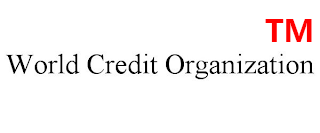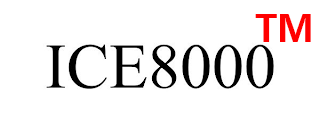ICE8000 Transparency Evaluation Criteria


ICE8000 International Credit Standard System
Transparency Evaluation Standard
(Version: ICE8000-078-20081110-20140925-7) (This standard) Writer: Fang Bangjian ; proposer: Fang Bangjian ; deliberative body: World Credit Organization Credit Standards Committee; effectiveness level: administrative resolution
Chapter I General Provisions
1.1 Note that organizational transparency has a significant impact on the integrity of the organization and has a significant impact on all stakeholders. In order to promote transparency, promote social integrity, reduce transaction costs and enhance human well-being, in accordance with internationally accepted legal principles and international Convention, the World Credit Organization (WCO) has developed this standard.
1.2 The main legal basis for the development, application and implementation of this standard is as follows:
(1) The principle of freedom of the Constitution. The constitutions of the vast majority of countries in the world give people the freedom to defend their legitimate rights, the freedom to maintain social justice and the freedom to express their opinions.
(2) The principle of public order and goodness of law. This legal principle gives people the right to maintain social justice. The basic principles of civil law in most countries of the world include the principles of public order and good customs.
(3) The principle of good faith in law. This legal principle gives people the obligation of good faith. Most countries in the world regard the principle of good faith as the basic law of their civil and commercial laws.
(4) The principle of freedom of contract in law, also known as the principle of free agreement. This legal principle gives people the freedom to enter into a civil contract. The basic principles of civil law in most countries of the world include the principle of freedom of contract.
1.3 The conduct of the application and implementation of this standard shall be deemed to be the tripartite or multi-party contractual act of the World Credit Organization (WCO) in Delaware, USA, as an attestation or supervisor, and The relevant disputes arising from this act are applicable to and protected by the laws of the State of Delaware and the United States, and the jurisdiction is also the International Court of Ethics or the Delaware Court of the United States and the United States Federal Court. If the parties have agreed otherwise or otherwise stated in the applicable law and/or jurisdiction, the binding does not involve the World Credit Organization (WCO).
1.4 This standard is applicable to the evaluation of transparency of individuals, units and regions.
1.5 Transparency evaluation follows the principles of reasonable, legal, objective and neutral.
1.6 The transparency index referred to in this standard refers to the score reflecting the transparency of the organization, and the ratio of the transparent information to the total data. The highest score for the Transparency Index is 100, which indicates 100% transparency.
The World Credit Organization (WCO) assesses its transparency index according to the information data of the ICE8000 credit information database for filing or disclosure (including secret disclosure or public disclosure) according to the unit or individual, and assesses the region according to the information disclosed and the survey results. Transparency index.
In general, the transparency index is inversely related to the difficulty of risk control. The lower the transparency of an organization, the more difficult it is for stakeholders to control the risk of the organization.
The transparency index 60 is divided into passing points, below 60 points, the transparency is low, the risk is difficult to control; 60 to 75 points, the transparency is moderate, the risk control is moderate; the 75 points or more, the transparency is higher, the risk control is more difficult low.
1.7 For units and individuals, the World Credit Organization (WCO) creates a computer software system that conforms to this standard. The system automatically evaluates the transparency index for various organizations to ensure the objectivity and institutionality of transparency evaluation, reducing subjectivity and humanity. .
For regions, the World Credit Organization (WCO) actively creates conditions, collects relevant information or conducts surveys and conducts transparency index assessments.
1.8 All parties applying this standard shall abide by the principle of good faith, moral bottom line and social responsibility bottom line in the process of applying this standard, and exercise and assume the rights and obligations stipulated in this standard.
1.9 All parties to this standard are deemed to have fully understood and committed to comply with all the terms of this standard. However, if any party to this standard finds any unfairness in any of the provisions of this standard, it has the right to publicly declare that it is not subject to public disclosure of the relevant circumstances and reasons and written notice to the World Credit Organization (WCO). Terms and conditions.
Chapter II Personal Transparency Index
2.1 Personal transparency index calculation standards are as follows:
| Filing or disclosure information category | Evaluation project | Score |
(1) Transparency of identity (Total: 55 points) |
1.1 Whether the name information is filed or disclosed | 1.1.1, not filed or disclosed, 0 points;
1.1.2, filed or disclosed, but not verified by ICE8000 credit agency, 5 points; 1.1.3, has been filed or disclosed, and has been verified by ICE8000 credit agency, 10 points. |
| 1.2 Is the ID card information or academic certificate filed or disclosed? | 1.2.1, not filed or disclosed, 0 points;
1.2.2, filed or disclosed, but not verified by ICE8000 credit agency, 10 points; 1.2.3, has been filed or disclosed, and has been verified by ICE8000 credit agency, 20 points. |
|
| 1.3 Self-introduction whether to file or disclose | 1.3.1, not filed or disclosed, 0 points;
1.3.2, has been filed or disclosed, the secret level of information is top secret, 0 points; 1.3.3, has been filed or disclosed, the secret level of information is confidential, 5 points; 1.3.4, has been filed or disclosed, the secret level of information is secret, 15 points; 1.3.5, filed or disclosed, with a public record or disclosure, 25 points. |
|
(2) Transparency of business activities and social activities (Total: 30 points) |
2.1 Learning experience information is filed or disclosed | For each information disclosed or filed, add one point and add up to 2 points. If you promise that all of this information has been disclosed or filed, add 1 point. |
| 2.2 Whether the professional experience information is filed or disclosed | For each information disclosed or filed, add one point and add up to 2 points. If you promise that all of this information has been disclosed or filed, add 1 point. | |
| 2.3 Whether the donation information is filed or disclosed | For each information disclosed or filed, add one point and add up to 2 points. If you promise that all of this information has been disclosed or filed, add 1 point. | |
| 2.4 Whether the donated information is filed or disclosed | For each information disclosed or filed, add one point and add up to 2 points. If you promise that all of this information has been disclosed or filed, add 1 point. | |
| 2.5 Whether the equity information is filed or disclosed | For each information disclosed or filed, add one point and add up to 2 points. If you promise that all of this information has been disclosed or filed, add 1 point. | |
| 2.6 Whether to purchase commodity service information for filing or disclosure | For each information disclosed or filed, add one point and add up to 2 points. If you promise that all of this information has been disclosed or filed, add 1 point. | |
| 2.7 Whether the sales of goods and services information is filed or disclosed | For each information disclosed or filed, add one point and add up to 2 points. If you promise that all of this information has been disclosed or filed, add 1 point. | |
| 2.8 Whether the information of participating in social groups is filed or disclosed | For each information disclosed or filed, add one point and add up to 2 points. If you promise that all of this information has been disclosed or filed, add 1 point. | |
| 2.9 Whether the credit information is filed or disclosed | For each information disclosed or filed, add one point and add up to 2 points. If you promise that all of this information has been disclosed or filed, add 1 point. | |
| 2.10 Whether debt information is filed or disclosed | For each information disclosed or filed, add one point and add up to 2 points. If you promise that all of this information has been disclosed or filed, add 1 point. | |
| (3) Transparency of warning information and praise information
(Total: 10 points) |
3Warning information and publicity information are filed or disclosed | For each information disclosed or filed, add one point and add up to 5 points. If you promise that all of this information has been disclosed or filed, add 5 points. |
| (4) Overall transparency commitment
(Total: 5 points) |
4 Whether it promises that all credit information has been filed or disclosed | Individual commitment to all credit information has been disclosed or filed, plus 5 points |
Chapter III Unit Transparency Index
3.1 Unit transparency index calculation standards are as follows
| Filing or disclosure information category | Evaluation project | Score |
(1) Unit identity information (Total: 5 points) |
1.1 Is the unit business license (such as the legal establishment certificate) verified? | 1.1.1, unrecorded or disclosed or unverified, 0 points;
1.1.2, has been filed or disclosed, and has been verified by ICE8000 credit agency, 2 points. |
| 1.2 Whether the information of the registration certificate filed or disclosed by the unit is disclosed | 1.2.1, not disclosed, 0 points;
1.2.2, open, 2 points. |
|
| 1.3 Whether the unit contact method is publicly disclosed | 1.3.1, undisclosed or undisclosed, 0 points;
1.3.2, has been publicly disclosed, 1 point. |
|
(2) Transparency of business activities and social activities (Total: 80 points) |
2.1 Whether senior employees (directors, supervisors, senior management) are filed or disclosed | For each information disclosed or filed, add one point and add up to 3 points. If you promise that all of this information has been disclosed or filed, add 1 point. |
| 2.2 Whether ordinary employees (middle management and ordinary employees) are filed or disclosed | For each information disclosed or filed, add one point and add up to 3 points. If you promise that all of this information has been disclosed or filed, add 1 point. | |
| 2.3 Whether the donation information is filed or disclosed | For each information disclosed or filed, add one point and add up to 3 points. If you promise that all of this information has been disclosed or filed, add 1 point. | |
| 2.4 Whether the donated information is filed or disclosed | For each information disclosed or filed, add one point and add up to 3 points. If you promise that all of this information has been disclosed or filed, add 1 point. | |
| 2.5 Whether the equity information is filed or disclosed | For each information disclosed or filed, add one point and add up to 3 points. If you promise that all of this information has been disclosed or filed, add 1 point. | |
| 2.6 Whether the shareholder information is filed or disclosed | For each information disclosed or filed, add one point and add up to 3 points. If you promise that all of this information has been disclosed or filed, add 1 point. | |
| 2.7 Whether to purchase commodity service information for filing or disclosure | For each information disclosed or filed, add one point and add up to 8 points. If you promise that all of this information has been disclosed or filed, add 1 point. | |
| 2.8 Whether the sales of goods and services information is filed or disclosed | For each information disclosed or filed, add one point and add up to 8 points. If you promise that all of this information has been disclosed or filed, add 1 point. | |
| 2.9 Whether the information of participating in social groups and members is filed or disclosed | For each information disclosed or filed, add one point and add up to 3 points. If you promise that all of this information has been disclosed or filed, add 1 point. | |
| 2.10 Whether the information of participating in or organizing the training for learning is filed or disclosed | For each information disclosed or filed, add one point and add up to 3 points. If you promise that all of this information has been disclosed or filed, add 1 point. | |
| 2.11 Whether the credit information is filed or disclosed | For each information disclosed or filed, add one point and add up to 8 points. If you promise that all of this information has been disclosed or filed, add 1 point. | |
| 2.12 Whether debt information is filed or disclosed | For each information disclosed or filed, add one point and add up to 8 points. If you promise that all of this information has been disclosed or filed, add 1 point. | |
| 2.13 Whether the guarantee or the guaranteed information is filed or disclosed | For each information disclosed or filed, add one point and add up to 2 points. If you promise that all of this information has been disclosed or filed, add 1 point. | |
| 2.14 Is the unit management system publicly filed or disclosed? | For each public disclosure or filing of a message, add one point, up to 8 points. If you promise that all of this information has been disclosed or filed, add 1 point. | |
| (3) Transparency of warning information and praise information
(Total: 10 points) |
3Warning information and publicity information are filed or disclosed | For each information disclosed or filed, add one point and add up to 5 points. If you promise that all of this information has been disclosed or filed, add 5 points. |
| (4) Overall transparency commitment
(Total: 5 points) |
4 Whether it promises that all credit information has been filed or disclosed | The unit promises that all credit information has been disclosed or filed, plus 5 points |
Chapter IV Regional Transparency Index
4.1 Regional transparency index bonus points are as follows:
| Filing or disclosure information category | Evaluation project | Score |
(1) Legislative transparency (Total: 18 points) |
1.1 Whether the draft law is published 60 days in advance (Special Note: The laws referred to in this standard include laws, regulations, and regulatory documents issued by state agencies.) |
1.1.1, not public, 0 points;
1.1.2, partial disclosure, 3 points; 1.1.3, all public, 6 points. |
| 1.2 Whether the legal review process is open | 1.2.1, not public, 0 points;
1.2.2, partial disclosure, 3 points; 1.2.3, all public, 6 points. |
|
| 1.3 Is the result of the legislation public? | 1.3.1, not public, 0 points;
1.3.2, partial disclosure, 3 points; 1.3.3, all open, 6 points. |
|
(2) Law enforcement transparency (Total: 18 points) |
2.1 Whether the law enforcement request information (such as report information, registration application information, etc. requires the law enforcement agencies to fulfill the statutory obligations) is open; | 2.1.1, not public, 0 points;
2.1.2, partial disclosure, 3 points; 2.1.3, all public, 6 points. |
| 2.2 Whether the law enforcement process is open; | 2.2.1, not public, 0 points;
2.2.2, partial disclosure, 3 points; 2.2.3, all public, 6 points. |
|
| 2.3 Whether the law enforcement results are public; | 2.3.1, not public, 0 points;
2.3.2, partial disclosure, 3 points; 2.3.3, all open, 6 points. |
|
| (3) Judicial transparency
(Total: 18 points) |
3.1 Whether the filing request information is open | 3.1.1, not public, 0 points;
3.1.2, partial disclosure, 3 points; 3.1.3, all public, 6 points. |
| 3.2 Whether the trial process is open | 3.2.1, not public, 0 points;
3.2.2, partial disclosure, 3 points; 3.2.3, all public, 6 points. |
|
| 3.3 Is the trial result public? | 3.3.1, not public, 0 points;
3.3.2, partial disclosure, 3 points; 3.3.3, all open, 6 points. |
|
| (4) Media freedom
(Total: 24 points) |
4.1 Is the media free to set up? | 4.1.1, completely free, 0 points;
4.1.2, basically not free, 1 point; 4.1.2, basic freedom, 4 points; 4.1.3, free, 8 points. |
| 4.2 Whether media practitioners can set up freely | 4.2.1, not free, 0 points;
4.2.2, basically not free, 1 point; 4.2.2, basic freedom, 4 points; 4.2.3, free, 8 points. |
|
| 4.3 Is the media free to report? | 4.3.1, completely free, 0 points;
4.3.2, basically not free, 1 point; 4.3.2, basic freedom, 4 points; 4.3.3, free, 8 points. |
|
| (5) Network freedom
(Total: 22 points) |
5.1 Whether the website can be freely established | 5.1.1, completely free, 0 points;
5.1.2, basically not free, 1 point; 5.1.2, basic freedom, 4 points; 5.1.3, free, 8 points. |
| 5.2 Is the netizen free to publish information? | 5.2.1, completely free, 0 points;
5.2.2, basically not free, 1 point; 5.2.2, basic freedom, 4 points; 5.2.3, free, 7 points. |
|
| 5.3 Is the public free to go online? | 5.3.1, completely free, 0 points;
5.3.2, basically not free, 1 point; 5.3.2, basic freedom, 4 points; 5.3.3, free, 7 points. |
Chapter V Liability for Breach of Contract and Method of Investigation
5.1 If the party violates the provisions of this standard, it shall bear the following liability for breach of contract:
(1) The corresponding legal liability, namely: the legal punishment prescribed by the relevant applicable law.
(2) Corresponding credit responsibility, that is, to bear credit punishments such as internal complaints, public complaints, credit warnings, internal exposure, public exposure, joint exposure, etc.
(3) The corresponding industry self-discipline responsibility, namely: announcement of criticism, fines, cancellation of credit card, prohibition of self-discipline and other disciplines.
(4) If the breach of contract causes losses (including material damage and mental damage) to others, it shall be liable for compensation. If the breach of contract constitutes a malicious dishonesty, it shall also make punitive damages to the infringed person in accordance with international practice and the principle of common law.
5.2 Method of investigation of breach of contract liability:
(1) According to the "ICS8000 International Credit Standard System Internal Complaint Standard" or "ICE8000 International Credit Standard System Public Complaint Standard" or "ICE8000 International Credit Standard System Credit Warning Standard" or "ICE8000 International Credit Standard System Internal Exposure Standard" or "ICE8000" International Exposure Standards for Public Credit Standards or Joint Exposure Standards for ICE8000 International Credit Standards System for credit complaints and credit penalties;
(2) Applying for arbitration under the International Credit Dispute Arbitration Commission in accordance with the ICE8000 International Credit Standards System International Credit Dispute Arbitration Standard, without the need to submit a separate arbitration agreement;
(3) Apply to the International Moral Court for trial in accordance with the ICE8000 International Credit Standards System International Credit Dispute Trial Standard;
(4) If the defaulter has the membership of the World Credit Organization (WCO), the parties also have the right to make a complaint in accordance with the World Credit Organization (WCO) Member Supervision Standards;
(5) File a lawsuit in the US Delaware Court or the US Federal Court in accordance with the laws of the State of Delaware or the United States federal law.
5.3 The responsibility for breach of contract in this standard shall be based on the principle of ignoring:
(1) Only the aggrieved party will take the initiative to pursue the investigation, and the defaulting party will bear the corresponding liability for breach of contract;
(2) The aggrieved party has the right to decide whether to initiate the corresponding accountability procedure for breach of contract;
(3) The aggrieved party has the right to understand the defaulting party or reach an agreement with the defaulting party.
5.4 For employees or agents who participate in, execute, or assist the parties to breach the contract, the aggrieved party has the right to pursue its corresponding responsibility unless it proves that it is not at fault.
5.5 Violations of the provisions of this standard may and should be considered as an independent breach of contract or dishonesty. If the relevant parties appear in the process of applying this standard, such acts as fraudulent, covert, defamatory, insulting, and denying others' credit evaluation rights, the act is an independent malicious dishonesty act or an independent serious malicious dishonesty. The parties concerned have the right to merge. Investigate or separately pursue the responsibility of the independent dishonesty.
5.6 The World Credit Organization (WCO) shall bear economic compensation for its own faults, and the expenditure for economic compensation shall be included in the financial plan of the World Credit Organization (WCO) for the next year. If the economic compensation is large, compensation shall be made in each year.
After accepting economic compensation, the World Credit Organization (WCO) has the right to recover losses from units or individuals responsible for acts of dishonesty with gross negligence or subjective intent.
Chapter VI Supplementary Provisions
6.1 This standard shall be implemented as of the date of promulgation.
6.2 The terminology involved in this standard, if its meaning is not agreed in this standard, its meaning is as follows in the ICE8000 International Credit Standard System International Credit Industry Terminology.
6.3 All relevant parties submit various types of materials submitted to the World Credit Organization (WCO) (or ICE8000 Credit Agency) in accordance with this standard. For the copyright agreement, see the ICE8000 International Credit Standard System Document Copyright Management Standard.
6.4 If the relevant parties know or ought to have known that any of the terms or conditions of this standard have not been complied with, but still do not expressly file a written objection in time for this non-compliance, it is deemed to waive their right to file an objection. The waiving party shall bear the legal consequences such as losses caused by the waiver, and the World Credit Organization (WCO) and other parties shall not be responsible for this.
6.5 This standard will be revised and improved. All parties applying this standard should pay full attention to the revision of this standard and apply the latest version of this standard, but the behavior that occurred before the revision of this standard may not be subject to the new revised clause. The official website of the latest Chinese version of this standard is: /aenhw/gc/78.html .
6.6 The copyright of this standard belongs to the World Credit Organization (WCO), members can use it for free and unlimited; non-members can use it for free, study, training, research, self-use, reprint, citation, adaptation, reference, reference under the premise of indicating or declaring the source. , reference. No unit or individual may plagiarize plagiarism or disguise plagiarism or otherwise infringe. Otherwise, we will jointly expose the infringing units, individuals and related personnel after the investigation of the infringement facts is clear (to issue a credit wanted order to the society). And reserves the right to pursue their legal responsibility. Do not infringe or infringe.
6.7 The standard version number is expressed as: ICE8000-abcd, where: the front-end ICE8000 indicates that this standard belongs to one of the standards of the ICE8000 international credit standard system; a is the serial number of the standard in the ICE8000 system standard set, if this standard is Abolished, the serial number is sometimes transferred to other standards; b is the initial writing time of this standard; c is the latest revision time of this standard; d is the number of revisions of this standard.
6.8 This standard is interpreted by the World Credit Organization (WCO).


